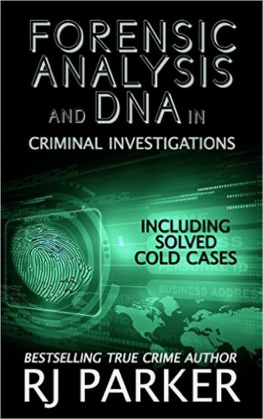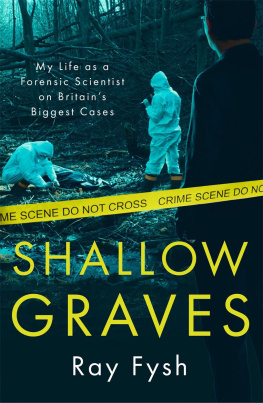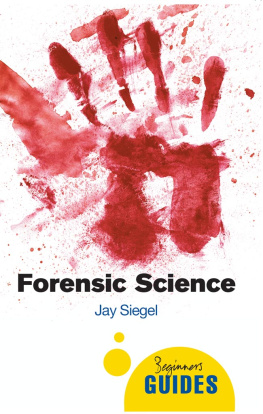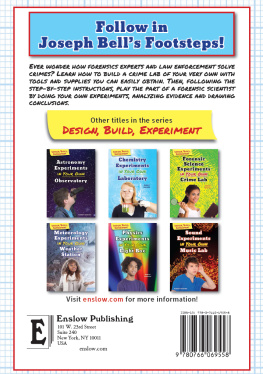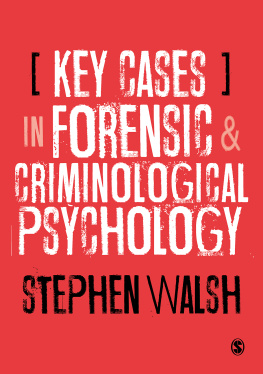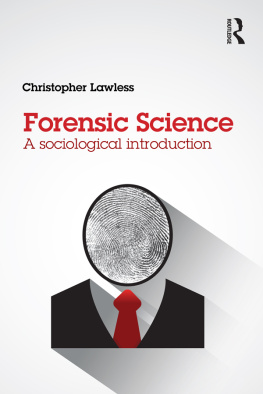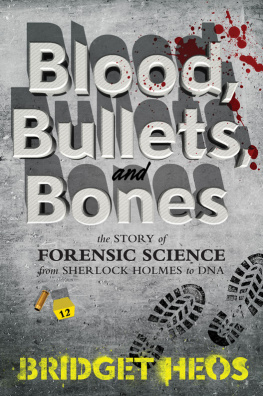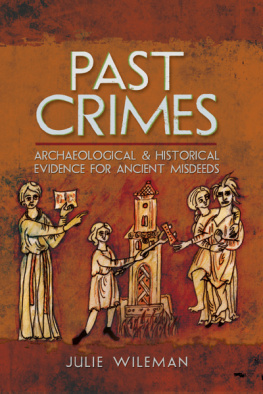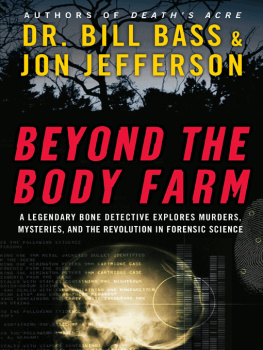The |
Forensic Historian |
| USING SCIENCE TO REEXAMINE THE PAST |
Robert C. Williams
First published 2013 by M.E. Sharpe
Published 2015 by Routledge
2 Park Square, Milton Park, Abingdon, Oxon OX14 4RN
711 Third Avenue, New York, NY 10017, USA
Routledge is an imprint of the Taylor & Francis Group, an informa business
Copyright 2013 Taylor & Francis. All rights reserved.
No part of this book may be reprinted or reproduced or utilised in any form or by any electronic, mechanical, or other means, now known or hereafter invented, including photocopying and recording, or in any information storage or retrieval system, without permission in writing from the publishers.
Notices
No responsibility is assumed by the publisher for any injury and/or damage to persons or property as a matter of products liability, negligence or otherwise, or from any use of operation of any methods, products, instructions or ideas contained in the material herein.
Practitioners and researchers must always rely on their own experience and knowledge in evaluating and using any information, methods, compounds, or experiments described herein. In using such information or methods they should be mindful of their own safety and the safety of others, including parties for whom they have a professional responsibility.
Product or corporate names may be trademarks or registered trademarks, and are used only for identification and explanation without intent to infringe.
Library of Congress Cataloging-in-Publication Data
Williams, Robert Chadwell, 1938
The forensic historian : using science to reexamine the past / by Robert C. Williams,
p. cm.
Includes bibliographical references and index.
ISBN 978-0-7656-3661-4 (hardcover : alk. paper)ISBN 978-0-7656-3662-1 (pbk. : alk. paper) 1. HistoriographyMethodologyCase studies. 2. Forensic scienceCase studies. 3. World history. I. Title.
D16.W619 2012
907.2dc23 |
2012033681 |
ISBN 13: 9780765636621 (pbk)
ISBN 13: 9780765636614 (hbk)
I determine what happened, not whodunit.
Michael Baden, medical examiner, City of New York
The evidence never lies.
Herbert MacDonell, fingerprint expert
Bones make good witnesses. They may speak softly, but they dont He and they never forget.
Clyde Snow, forensic anthropologist
Contents
Teaching at Washington University in St. Louis in the 1970s and 1980s, I came to know a remarkable woman and pioneer forensic historian and anthropologist. Dr. Mildred Trotter, or Trott, as she was known, had struggled in the male-dominated world of modern medicine for decades before becoming a professor of anatomy at the Washington University Medical School. Like my wife, my mother, and my grandmother, Dr. Trotter was an uncommon woman graduate of Mount Holyoke College (Class of 1920) and a scientist of uncommon intelligence, dedication, perseverance, and humor. A woman scientist was a rare bird in those days, and Mildred was not only rare, but tough. She had to be.
Trott had arrived at the Washington University medical school in 1920 and never left. (She died in 1991 at the age of ninety-two.) In 1948 the university granted her a fourteen-month (unpaid) leave of absence to work as a medical anthropologist in the Central Identification Laboratory of the U.S. Armys Graves Registration Service at Schofield Barracks in Hawaii. Here she helped identify the remains of thousands of U.S. servicemen and servicewomen who had died in the Pacific war against Japan. She was always proud of the fact that her laboratory identified 94 percent of the remains it measured and analyzed. Authenticity was mandatory, and no remains were ever delivered to a family without positive identification and absolute certainty.
Much of Trotts work involved measuring bones, skulls, and teeth, matching them with dog tags or dog-tag imprints, dental records, and other information to identify the war dead. She worked in a massive building that was airy, light, and sanitary. Her colleagues formed a team of twenty-three people in 1949. Ninety-nine percent of the remains collected were skeletal. In time, Dr. Trotter discovered a quantitative relationship between the length of limbs and long bonesfemurs, tibiae, and fibulaeand the height of an individual. For example, for white males, height was determined as the length of the femur x 2.38 + 61.4 centimeters; the length of the tibia x 2.52 + 78.62 centimeters; or the length of the fibula x 2.68 + 71.78 centimeters. Other measurements became standards in forensic pathology for determining race, height, weight, age, and gender. They proved especially helpful in identifying passengers from downed aircraft. If you knew how to listen, bones could talk and even testify.

Mildred Trotter was a pioneer in forensic anthropology who identified servicemen from World War II by their long bones. (Becker Medical Library, Washington University School of Medicine)
Mildred Trotter was my first contact with forensics and the way in which modern science could reexamine the past in the context of history and law under the glare of media attention. Her significant contributions to forensic pathology were recognized only after her retirement. Her work in bringing closure to the grief of thousands of families who had lost loved ones in war was barely remembered. She was a pioneer woman in the male-dominated world of modern medical science. She lived through a period when forensics became the essential toolbox of criminal investigations, and techniques like neutron activation analysis and DNA fingerprinting supplemented the evidence of bones and teeth. Trott helped me understand the significance of forensics in studying the past long before CSI became a television staple.
This book is therefore dedicated to the memory of Dr. Mildred Trotter and her contributions to modern forensics, and thus to history. She was, in fact, a pioneer forensic historian.
Acknowledgments
I would like to acknowledge again the help and support of my M.E. Sharpe editor, Steve Drummond, who was as much of a moving force behind The Forensic Historian as he was for my previous book The Historians Toolbox. Henrietta Toth, Kim Giambattisto, and Laurie Lieb were again superb copy editors. Phil Cantelon provided the perspective and wisdom of another professional historian. Walter Grzyb of the Maine State Police offered necessary perspectives and information on forensics. Mandy Combest of the Chief Medical Examiners Office in Louisville, Kentucky, provided me with materials on the 1991 exhumation of U.S. president Zachary Taylor. Amanda Walsh arranged for me to visit the new Titanic museum in Belfast that provided insights into the case of the Titanic rivets. My wife Ann, a gifted scientist, editor, and friend, inspired the title (again) and contributed some central ideas. None of them should be blamed for the shortcomings of a forensic history they helped craft.


